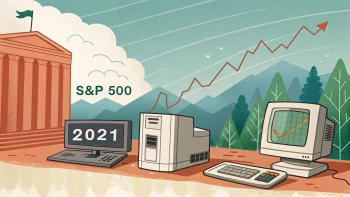A significant shift occurred in the mortgage market today, September 19, when the Federal Reserve’s interest rate cut coincided with an unexpected surge in mortgage rates. This event highlighted a common misunderstanding about the relationship between Federal Reserve actions and mortgage rates.
Table of Contents
ToggleThe Federal Reserve’s Role in Interest Rates
Many people incorrectly assume that the Federal Reserve directly controls mortgage rates. In reality, the Fed’s influence on interest rates is primarily focused on short-term lending. The Federal Reserve sets rates for short-term loans that businesses and individuals use for various purposes, such as:
- Business expansion and operations
- Factory construction
- Employment initiatives
- Short-term consumer lending
View this post on Instagram
How Mortgage Rates Are Actually Determined
Mortgage rates follow a different mechanism entirely. Banks determine mortgage rates through a two-step process:
First, they use the 10-year Treasury rate as their baseline. Second, they add a spread based on individual borrower credit ratings. This process means that mortgage rates are more closely tied to long-term market factors than to the Federal Reserve’s short-term rate decisions.
The Inflation Connection
Inflation plays a central role in determining the 10-year Treasury rate, which directly affects mortgage rates. When the Federal Reserve lowers interest rates, it typically leads to:
- Increased borrowing activity
- Higher spending levels
- Greater economic activity
- Rising inflation pressures
This chain of events creates what might seem like a paradox: lower Federal Reserve rates can actually result in higher mortgage rates due to their inflationary impact. The relationship works as follows:
Lower Fed rates encourage more borrowing, which increases money circulation in the economy. This additional economic activity can fuel inflation. As inflation rises, the 10-year Treasury rate typically increases, pushing mortgage rates higher.
For potential homebuyers, this means that hoping for Federal Reserve rate cuts might actually work against their interests. The direct relationship between Fed rate cuts and higher inflation can lead to increased mortgage rates, making home purchases more expensive.
Frequently Asked Questions
Q: Why don’t mortgage rates follow the Federal Reserve’s rate changes?
Mortgage rates are primarily influenced by the 10-year Treasury rate and individual credit factors, not the Federal Reserve’s short-term rates. The Fed’s decisions affect short-term lending, while mortgages are long-term financial instruments.
Q: How does inflation impact mortgage rates?
Inflation directly influences the 10-year Treasury rate, which serves as the foundation for mortgage rates. When inflation increases, Treasury rates typically rise, leading to higher mortgage rates.
Q: Should homebuyers want the Fed to cut interest rates?
Contrary to popular belief, Federal Reserve rate cuts might not benefit homebuyers. These cuts can stimulate inflation, which often results in higher mortgage rates due to their effect on Treasury yields.

















